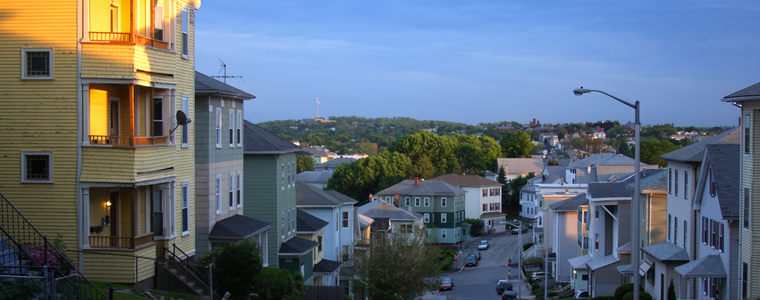New White Paper: On the Use of ‘Cool Roofs’ to Reduce Residential Heat Exposure Disparities in Boston, MA
The Initiative on Cities just released a new white paper on the use of ‘cool roofs’ to reduce residential heat exposure disparities in Boston. This white paper was co-authored by Ian Smith (PhD Candidate, Earth & Environment), Katharine Lusk (Co-Director, Initiative on Cities), and Lucy Hutyra (Professor, Earth & Environment), and uses data from a recently published piece in Science of The Total Environment.
Paper Abstract:
A “cool roofs” program targeted to the hottest, most vulnerable neighborhoods in Boston has the potential to significantly reduce urban heat islands and heat exposure disparities. Boston’s hottest neighborhoods have the highest proportion of flat black roofs, such as those on our famous triple deckers, which absorb rather than reflect heat. Because of the proportion of this type of roof and housing stock in Boston, a targeted program to whiten or lighten residential rooftops would have a measurable impact on reducing extreme heat, improving thermal comfort, and reducing energy use in summer. A similar program has recently been piloted in Louisville, KY, offering lessons for potential implementation in Boston. While Boston’s recent Heat Resilience Plan (City of Boston 2022) already highlights the need for a cool roof program, the focus is on commercial or city-owned property such as schools, and the intervention calls for grants to nonprofits rather than integration with Boston’s existing residential programs. Boston has an opportunity to invest in a more focused program targeting the hottest, most vulnerable residential blocks.
Read the White Paper